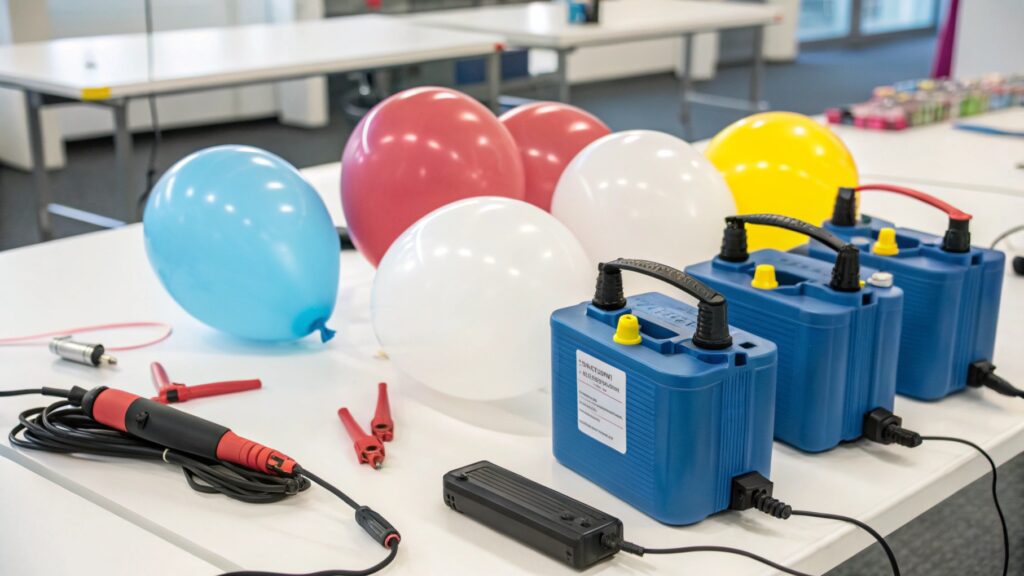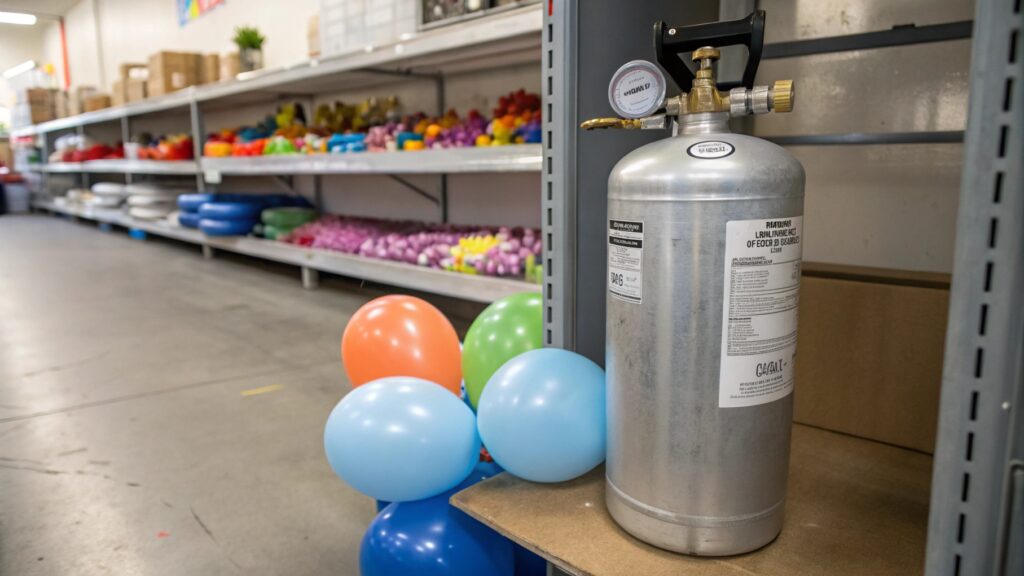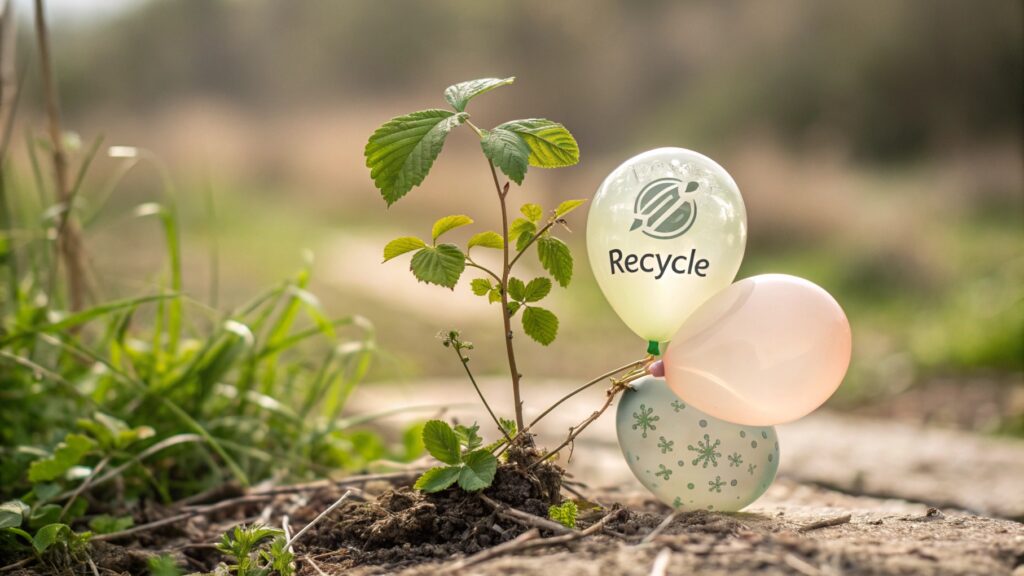What Can Replace Helium in Balloons?
Are you tired of the high cost and scarcity of helium for your balloons? Understanding alternatives is key.
If you don't need your balloons to float, regular air1 is the safest, most accessible, and most affordable alternative to helium. Air-filled balloons can be just as festive and are perfect for garlands, arches, and floor decorations, eliminating the risks associated with flammable gases2.

When I started AIHUA BALLOON, I quickly saw that helium was a big challenge. Its cost kept going up. Finding it was also hard, especially for big orders. My customers, like Sarah, need good products and good prices. I knew we had to find other ways. We had to give them solutions that worked, without making things harder. This made me look closely at all our options.
What are safe alternatives to helium3 for inflating balloons?
Are you looking for safe ways to fill your balloons? Choosing the right gas is important for safety.
The safest alternative to helium for inflating balloons, especially for home or event use, is regular atmospheric air4. Air is non-flammable, non-toxic, and readily available, making it ideal for non-floating balloon decorations like arches, columns, and walls.

At AIHUA BALLOON, our top priority is safety. This means we avoid materials that could harm people. Helium is super safe because it does not burn and does not react with other things. Other gases, however, can be dangerous. For example, hydrogen is much lighter than air, so it makes balloons float well. But hydrogen is very flammable5. A small spark can make it explode. This risk is too high. My team and I strongly advise against using hydrogen. We always tell our clients, especially those with big events or stores, to stick to air if floating is not a must-have. Air is free and easy to get. It does not burn. It is not toxic. You can use hand pumps or electric blowers to fill balloons with air. This makes sure events are fun and safe.
| Gas Type | Flammability | Toxicity | Lift Capability | Accessibility | Cost |
|---|---|---|---|---|---|
| Air | Non-flammable | Non-toxic | None | High | Low |
| Hydrogen | Highly flammable | Non-toxic | High | Low | Low |
| Helium | Non-flammable | Non-toxic | High | Low | High |
Are there non-flammable gases6 that can replace helium in balloons?
Are you worried about fire risks with balloon gases? Non-flammable options are important.
Yes, besides helium, the most common and safest non-flammable gas that can replace it in balloons, if you do not require them to float, is regular atmospheric air. Air is a mixture of non-flammable gases, primarily nitrogen and oxygen, making it completely safe for indoor and outdoor balloon displays.

When I worked in procurement before AIHUA BALLOON, I learned a lot about supply chains and safety. This experience taught me that safety specifications are not just rules. They are there to protect people. For balloons, this means choosing gases that are safe. Helium is a noble gas. This means it does not react with other elements. It does not burn. It is very stable. This makes it perfect for balloons. It is why everyone uses it for floating balloons. But helium is getting harder to find. It is also more expensive. This makes us look for other non-flammable gases7. Carbon dioxide is one such gas. It is not flammable. It is also heavier than air. This means it will not make balloons float. But it is safe. It can be used for special effects, like dropping balloons from a net. Nitrogen is another non-flammable gas. It makes up most of the air we breathe. It is not toxic. It does not burn. But like carbon dioxide8, it does not make balloons float. If floating is not needed, these gases offer safe options. My advice to customers like Sarah is always to prioritize safety. Check the gas properties before using anything new.
| Non-Flammable Gas | Density vs. Air | Lift Capability | Primary Use in Balloons | Safety Profile (Flammability) |
|---|---|---|---|---|
| Air | Same as air, mixture | No | Non-floating displays | Non-flammable |
| Carbon Dioxide | Heavier than air | No | Dropping effects | Non-flammable |
| Nitrogen | Slightly lighter than air | No | Industrial filling (non-floating) | Non-flammable |
What affordable and accessible gases can be used instead of helium in balloons?
Do you need cheap and easy options for balloon inflation? Cost and availability are key.
For truly affordable and accessible balloon inflation, especially for large-scale decorations where float is not necessary, regular atmospheric air is the only practical solution. It is free, universally available, and requires only simple, inexpensive pumps for inflation.

My work at AIHUA BALLOON means I am always looking for ways to cut costs for our customers without lowering quality. Helium's price makes it a challenge. When a client like GlobalMart needs thousands of balloons, the cost of helium adds up fast. This is why air is so important. It costs nothing. Anyone can get it. You do not need special tanks. You do not need to worry about supply shortages. We tell our clients to think about their needs. Do they really need the balloons to float? For big arches, columns, or balloon walls9, air works perfectly. Sarah from GlobalMart values efficiency. Using air means fewer logistical headaches. No need to order gas cylinders. No need for special handling. It simplifies everything. We provide a lot of air pumps and electric inflators. They are also affordable. This makes air a complete solution for many decorating needs. It helps our customers manage their budgets better. It also helps them deliver big projects without big gas costs.
| Alternative Gas | Cost | Accessibility | Equipment Needed | Suitable For |
|---|---|---|---|---|
| Air | Free | Very High | Hand/Electric Pump | Non-floating decor (arches, columns) |
| Hydrogen | Low (but dangerous) | Low | Specialized equipment | Floating (but unsafe) |
| Carbon Dioxide | Moderate | Moderate | CO2 tanks, regulator | Non-floating (special effects) |
What is a sustainable and environmentally friendly substitute for helium in balloons?
Are you wondering about eco-friendly balloon choices? Sustainability is important for the planet.
The most sustainable and environmentally friendly substitute for helium in balloons is undoubtedly atmospheric air. Air has zero environmental impact when used for inflation, as it is naturally abundant and requires no energy-intensive production10 or transport of rare gases.

I care a lot about our planet. At AIHUA BALLOON, we work hard to make our products eco-friendly. This includes looking at how balloons are used. Helium is a limited resource. It is a non-renewable gas. It is used in important medical and scientific ways. Using it for balloons takes away from those critical uses. It also has a big carbon footprint from mining and transport. This is why I think air is the best choice for the environment. When you use air, you are not using up a rare resource. You are not adding to greenhouse gases. Air is just there, all around us. It does not need to be processed or shipped long distances. My passion for sustainable manufacturing makes me advocate for air-filled balloons whenever possible. It reduces waste. It saves energy. It helps protect our planet. For clients like Sarah, who are focused on responsible sourcing, air-filled balloon designs are a perfect fit. They align with global sustainability goals.
| Alternative | Resource Depletion | Carbon Footprint | Availability Status | Environmental Impact |
|---|---|---|---|---|
| Air | None | Negligible | Unlimited | Very Low |
| Hydrogen | Low | Production-dependent | Potentially High | Varies (production methods) |
| Helium | High (Finite) | High | Increasingly Scarce | High |
Conclusion
If you do not need balloons to float, regular air is the safest, most affordable, and most sustainable alternative to helium. Stick to air for safety and cost savings.
-
Explore the advantages of using regular air for balloons, including safety and cost-effectiveness, to enhance your decorating options. ↩
-
Explore this link to understand the dangers of flammable gases and ensure safe balloon decoration practices. ↩
-
Explore this link to discover various safe alternatives to helium, ensuring your balloon decorations are both effective and safe for any event. ↩
-
Learn why using regular atmospheric air is a practical choice for inflating balloons, especially for non-floating decorations, ensuring safety and availability. ↩
-
Understanding the flammability of hydrogen is crucial for safety. This link will provide insights into its risks and safety measures. ↩
-
Explore this link to discover safe alternatives to helium for balloons, ensuring your events are both fun and risk-free. ↩
-
Explore this link to understand the safety and applications of non-flammable gases in balloon inflation, ensuring safe choices for your events. ↩
-
Learn how carbon dioxide can be creatively used in balloon displays, offering safe alternatives for special effects and decorations. ↩
-
This link will provide creative ideas and techniques for making stunning balloon walls, enhancing your event decor. ↩
-
Explore this link to understand how energy-intensive production affects sustainability and discover eco-friendly alternatives. ↩
